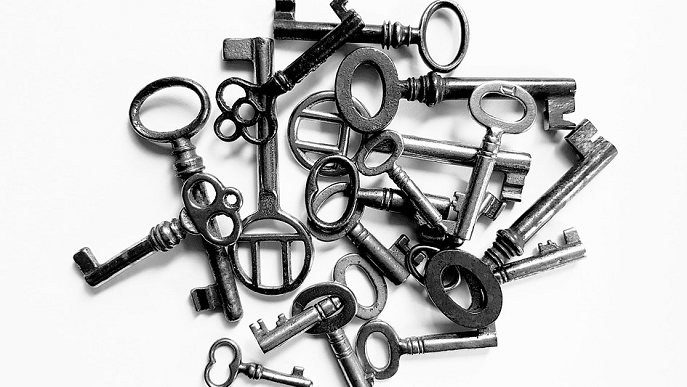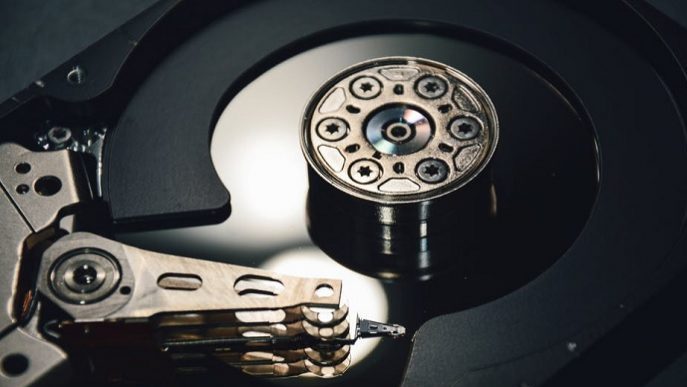- Joined
- Nov 26, 2020
- Messages
- 714
Computer jargon and the technologies they describe can be very complex. There is nothing wrong with that, and for the people who design and build these things, the complexity is part of the thrill.
Even as an enthusiast user, I don't understand most of the low-level mathematical details of how high tech works.
If you are not a computer technology enthusiast, then do you really need to know and understand all the details? Of course not. In fact, if a technology requires specialized knowledge to use, then it is not ready for prime time use.
It's the same with computer encryption. While the technical details of encryption can be confusing, it's actually not difficult to use it as a consumer. To make the right decisions, you need a basic knowledge of how encryption works in general. When it comes to your own safety, the ultimate responsibility rests with you. So it's important to stay informed.
Encryption: explain to me like I'm 5
Let's say you wanted to send an email to someone, but the content of the message is pretty confidential. This is a big secret that ONLY the person destined to read should see. If someone else got their hands on it, you would be in more trouble than you think. Let's just say you're very interested in keeping your message out of the wrong hands.
So how would you do it? Would you hire an armed guard? Put it in a very sturdy safe? How about putting a code on it, and if the wrong PIN is entered, the message will self-destruct?
These are all pretty serious decisions, but even in this case there is no guarantee that someone will not bypass them. So why not just write your message in a form that ONLY the person on the other end of the line can read? Almost like a secret language between the two of you.
That's a good analogy, if what is "encryption". This is a way to manipulate your message so that no one understands it. The other person knows how you manipulated it and can reverse the process when they receive your message. So it doesn't matter if anyone else has a copy of the information. It doesn't make any sense.
In short, this is encryption.
Okay, but how?
That's a good question. It's one thing to say we're "manipulating" a message to make it unreadable, but what does the process actually look like?
First, let's get to know some of the terms. You already know that the process of encrypting a message is called encryption. Encryption is a practical part of the field known as cryptography. The method we use to manipulate a message to encrypt it is called "cipher".
All cryptography is based on the art of making ciphers. A cipher is a bit that you have to share with another person who will receive the message. You use the instructions built into the cipher to confuse the message. The person on the other end then uses a cipher to mix things up.
What does the cipher actually look like? The simplest example is a substitution cipher. This is what you don't need a computer for, but it has really had practical uses in history. Good enough for army generals and the like. You take a letter in a message and replace it with something else. It may be another letter in the alphabet, some symbols you have invented.
It's all about keys these days

The ciphers we use on computers these days are conceptually the same as other types of ciphers. The key difference is that knowing how a cipher works is not enough to completely reverse its operation. How can it be? This is thanks to the inclusion of randomness. As you probably already know, randomness, by definition, has no patterns. If you pick 100 numbers at random, then nothing connects them with each other.
The ciphers that we use for computers leave a small gap that needs to be filled in with a random sequence of characters. They then form an integral part of how the cipher processes information. This means that simply knowing how the cipher works will not generally help you decode a particular message.
As part of the cipher functionality, there is a unique character string known as the encryption key. You will need both this key and the cipher to understand the message again. The ciphers are so complex that only a computer can apply them. This means that the only way forward is to guess the key. Only with this there is one small problem ...
Keys are impossible to guess

Well, technically it's not impossible, but it's so difficult that it might not be possible. Remember, keys are randomized, which means it is impossible to predict or derive a key from anything else.
This means that in order to break the encryption, you have to guess. How long will that take? Ok, let's do a little example to give you an idea. Let's say you wanted to steal a bike. I don't know why you just want him so desperately.
The bike has a four-digit lock. Each digit can be from 0 to 9. Since there are four digits, this means that the number that will unlock the bike is in the range of 0000 to 9999. There are 10,000 possible numbers. If you had to guess all the possible numbers, and you could make one number per second, it would take you almost three hours to iterate over all of them. Of course, you will probably get the correct number sooner. The probability that this will be the first half of the possible numbers is 50%. It is "only" about an hour and a half. However, you will surely be caught long before you actually find the answer.
Now imagine that we add just one number to this lock. Then we can go from 00000-99999. We now have ten times as many possible combinations, and now it will take ten times as long. With each additional digit in the code, the difficulty of guessing increases tenfold.
It's the same with encryption keys, but the numbers are much crazier. A typical encryption key is 128 or 256 digits long. Moreover, each digit is not between 0-9. Instead, the entire alphanumeric set is available. This includes all numbers and both registers of the alphabet. There are trillions of guesses in total, which means there simply isn't enough time or energy in the universe to ever guess the right answer.
Each has its own type - cryptography
There are many ways to approach encryption. You already know that today's encryption is key-based, but not all key-based encryption is the same. There are three main types of encryption that you should be aware of as an Internet user.
The simplest type is symmetric encryption. It's just a fancy way of saying that the key you use to encrypt also decrypts. This means that if anyone ever got their hands on the key, you are in trouble. Wi-Fi networks use this setting. In this case, the key is your WiFi password. This is why you should use a VPN with public Wi-Fi. Everyone has the key, so they can spy on you if they want to.
To solve the problem of humans getting keys without giving them access to decrypt, we invented asymmetric encryption . Now there are two such keys. Everyone can do only one job: encrypt or decrypt.
So you can safely make one public. Anyone who wants to send you a message can use your public key. Only you can decrypt it with your private key. To send information in another way, you use another person's public key.
Finally, there is hashing, which is not entirely related to data encryption, but is related to it. When you hash a piece of data, you get a unique signature. If there was a different bit in the data, the hash would look completely different. There is no actual data in the hash itself. Hashes are used to check if the data has changed. We also use them for passwords. A provider like Facebook doesn't have your actual password in the file. Just a hash from this. When you enter the password, it is hashed again. If both hashes match exactly, you are granted access.
Why we need cryptography
It's not hard to find an example of cryptography that can help you in your daily life. For example, you are probably connected to a Wi-Fi network right now or will be connected to a network today. The Wi-Fi passcode is actually an encryption key, albeit quite simple and short. Based on what you read above, you could figure out that this is an example of symmetric encryption.
This is far from the only place. Here are some of the common times encryption makes your life better.
Disk and device encryption

The information on the disks of our computers and smartphones can contain very confidential information, and it is obvious that it needs to be protected.
Encryption can help a lot. There are many full disk encryption programs out there that will turn your Windows, Mac or Linux PC into a data warehouse.
The same goes for Android and iOS phones and tablets. They come with full disk encryption activated by default these days. With disk encryption, it doesn't matter if someone gets physical access to your data. Without the decryption key, they have no chance of accessing your information.
Internet encryption

If you are using Wi-Fi, the router encrypts the signal between itself and your device. If you visit a website with HTTPS protection, all information about you and their server will be protected. This is very useful if you do not want bank details or other personal information to be intercepted on the way to or from the web server.
Then there's VPN protection. A VPN or virtual private network encrypts every bit of data left over or coming through your network port. This means that your ISP and your government cannot keep track of what you are doing. The site you are connecting to also does not know who or where you are. It is a powerful form of protection available to everyone. We especially love ExpressVPN. So maybe this is a good place to start.
Encryption: hard to crack, easy to understand
These are all the basic facts needed to understand encryption and its role in our daily digital life. Thanks to encryption, we can all live and work in relative security. By integrating encryption into your daily life, you can effectively fight a world that wants to rob you of your privacy. Don't know about you, but this doesn't sound like a good deal!
Even as an enthusiast user, I don't understand most of the low-level mathematical details of how high tech works.
If you are not a computer technology enthusiast, then do you really need to know and understand all the details? Of course not. In fact, if a technology requires specialized knowledge to use, then it is not ready for prime time use.
It's the same with computer encryption. While the technical details of encryption can be confusing, it's actually not difficult to use it as a consumer. To make the right decisions, you need a basic knowledge of how encryption works in general. When it comes to your own safety, the ultimate responsibility rests with you. So it's important to stay informed.
Encryption: explain to me like I'm 5
Let's say you wanted to send an email to someone, but the content of the message is pretty confidential. This is a big secret that ONLY the person destined to read should see. If someone else got their hands on it, you would be in more trouble than you think. Let's just say you're very interested in keeping your message out of the wrong hands.
So how would you do it? Would you hire an armed guard? Put it in a very sturdy safe? How about putting a code on it, and if the wrong PIN is entered, the message will self-destruct?
These are all pretty serious decisions, but even in this case there is no guarantee that someone will not bypass them. So why not just write your message in a form that ONLY the person on the other end of the line can read? Almost like a secret language between the two of you.
That's a good analogy, if what is "encryption". This is a way to manipulate your message so that no one understands it. The other person knows how you manipulated it and can reverse the process when they receive your message. So it doesn't matter if anyone else has a copy of the information. It doesn't make any sense.
In short, this is encryption.
Okay, but how?
That's a good question. It's one thing to say we're "manipulating" a message to make it unreadable, but what does the process actually look like?
First, let's get to know some of the terms. You already know that the process of encrypting a message is called encryption. Encryption is a practical part of the field known as cryptography. The method we use to manipulate a message to encrypt it is called "cipher".
All cryptography is based on the art of making ciphers. A cipher is a bit that you have to share with another person who will receive the message. You use the instructions built into the cipher to confuse the message. The person on the other end then uses a cipher to mix things up.
What does the cipher actually look like? The simplest example is a substitution cipher. This is what you don't need a computer for, but it has really had practical uses in history. Good enough for army generals and the like. You take a letter in a message and replace it with something else. It may be another letter in the alphabet, some symbols you have invented.
It's all about keys these days

The ciphers we use on computers these days are conceptually the same as other types of ciphers. The key difference is that knowing how a cipher works is not enough to completely reverse its operation. How can it be? This is thanks to the inclusion of randomness. As you probably already know, randomness, by definition, has no patterns. If you pick 100 numbers at random, then nothing connects them with each other.
The ciphers that we use for computers leave a small gap that needs to be filled in with a random sequence of characters. They then form an integral part of how the cipher processes information. This means that simply knowing how the cipher works will not generally help you decode a particular message.
As part of the cipher functionality, there is a unique character string known as the encryption key. You will need both this key and the cipher to understand the message again. The ciphers are so complex that only a computer can apply them. This means that the only way forward is to guess the key. Only with this there is one small problem ...
Keys are impossible to guess

Well, technically it's not impossible, but it's so difficult that it might not be possible. Remember, keys are randomized, which means it is impossible to predict or derive a key from anything else.
This means that in order to break the encryption, you have to guess. How long will that take? Ok, let's do a little example to give you an idea. Let's say you wanted to steal a bike. I don't know why you just want him so desperately.
The bike has a four-digit lock. Each digit can be from 0 to 9. Since there are four digits, this means that the number that will unlock the bike is in the range of 0000 to 9999. There are 10,000 possible numbers. If you had to guess all the possible numbers, and you could make one number per second, it would take you almost three hours to iterate over all of them. Of course, you will probably get the correct number sooner. The probability that this will be the first half of the possible numbers is 50%. It is "only" about an hour and a half. However, you will surely be caught long before you actually find the answer.
Now imagine that we add just one number to this lock. Then we can go from 00000-99999. We now have ten times as many possible combinations, and now it will take ten times as long. With each additional digit in the code, the difficulty of guessing increases tenfold.
It's the same with encryption keys, but the numbers are much crazier. A typical encryption key is 128 or 256 digits long. Moreover, each digit is not between 0-9. Instead, the entire alphanumeric set is available. This includes all numbers and both registers of the alphabet. There are trillions of guesses in total, which means there simply isn't enough time or energy in the universe to ever guess the right answer.
Each has its own type - cryptography
There are many ways to approach encryption. You already know that today's encryption is key-based, but not all key-based encryption is the same. There are three main types of encryption that you should be aware of as an Internet user.
The simplest type is symmetric encryption. It's just a fancy way of saying that the key you use to encrypt also decrypts. This means that if anyone ever got their hands on the key, you are in trouble. Wi-Fi networks use this setting. In this case, the key is your WiFi password. This is why you should use a VPN with public Wi-Fi. Everyone has the key, so they can spy on you if they want to.
To solve the problem of humans getting keys without giving them access to decrypt, we invented asymmetric encryption . Now there are two such keys. Everyone can do only one job: encrypt or decrypt.
So you can safely make one public. Anyone who wants to send you a message can use your public key. Only you can decrypt it with your private key. To send information in another way, you use another person's public key.
Finally, there is hashing, which is not entirely related to data encryption, but is related to it. When you hash a piece of data, you get a unique signature. If there was a different bit in the data, the hash would look completely different. There is no actual data in the hash itself. Hashes are used to check if the data has changed. We also use them for passwords. A provider like Facebook doesn't have your actual password in the file. Just a hash from this. When you enter the password, it is hashed again. If both hashes match exactly, you are granted access.
Why we need cryptography
It's not hard to find an example of cryptography that can help you in your daily life. For example, you are probably connected to a Wi-Fi network right now or will be connected to a network today. The Wi-Fi passcode is actually an encryption key, albeit quite simple and short. Based on what you read above, you could figure out that this is an example of symmetric encryption.
This is far from the only place. Here are some of the common times encryption makes your life better.
Disk and device encryption

The information on the disks of our computers and smartphones can contain very confidential information, and it is obvious that it needs to be protected.
Encryption can help a lot. There are many full disk encryption programs out there that will turn your Windows, Mac or Linux PC into a data warehouse.
The same goes for Android and iOS phones and tablets. They come with full disk encryption activated by default these days. With disk encryption, it doesn't matter if someone gets physical access to your data. Without the decryption key, they have no chance of accessing your information.
Internet encryption

If you are using Wi-Fi, the router encrypts the signal between itself and your device. If you visit a website with HTTPS protection, all information about you and their server will be protected. This is very useful if you do not want bank details or other personal information to be intercepted on the way to or from the web server.
Then there's VPN protection. A VPN or virtual private network encrypts every bit of data left over or coming through your network port. This means that your ISP and your government cannot keep track of what you are doing. The site you are connecting to also does not know who or where you are. It is a powerful form of protection available to everyone. We especially love ExpressVPN. So maybe this is a good place to start.
Encryption: hard to crack, easy to understand
These are all the basic facts needed to understand encryption and its role in our daily digital life. Thanks to encryption, we can all live and work in relative security. By integrating encryption into your daily life, you can effectively fight a world that wants to rob you of your privacy. Don't know about you, but this doesn't sound like a good deal!





















